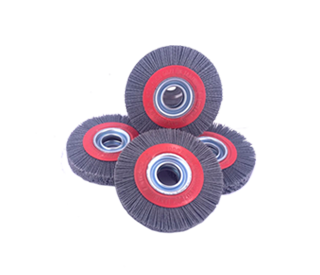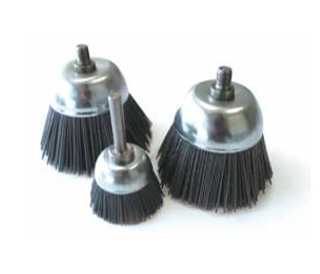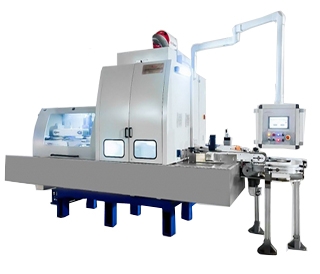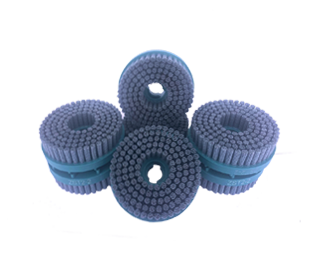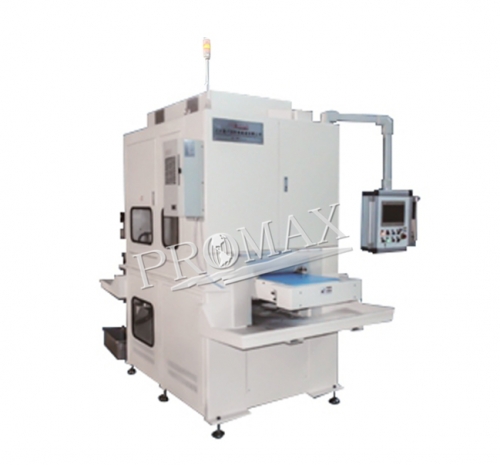How to solve glitches
1. Manual deburring: This is a more traditional and commonly used method, using files (files include manual files and pneumatic files), sandpaper, belt machines, grinding heads, etc. as auxiliary tools. Disadvantages: The labor cost is more expensive, the efficiency is not very high, and it is difficult to remove the complicated cross holes. Applicable objects: The technical requirements for workers are not very high, and it is suitable for aluminum alloy die-casting parts with small burrs and simple product structure.
2. Die deburring: Use a manufacturing die to cooperate with a punch for deburring. Disadvantages: a certain amount of die (coarse die, fine die) production costs are required, and a shaping die may also be required. Applicable objects: Suitable for aluminum alloy die castings with simple parting surfaces, and the efficiency and deburring effect are better than manual.
3. Grinding and deburring: This type of deburring includes vibration, sandblasting, rollers and other methods, which are currently used in die casting plants. Disadvantages: There is a problem that the removal is not very clean, and it may be necessary to manually process residual burrs or cooperate with other methods to deburr. Applicable objects: suitable for small aluminum alloy die castings with larger batches.
4. Frozen deburring: Use cooling to make the burr brittle quickly, and then spray the projectile to remove the burr. Applicable objects: Suitable for aluminum alloy die castings with small burr wall thickness and small volume.
5. Thermal explosion deburring: also called thermal deburring and explosion deburring. By passing some flammable gas into an equipment furnace, and then through the action of some media and conditions, the gas instantly explodes, and the energy generated by the explosion is used to dissolve and remove burrs. Disadvantages: expensive equipment (prices of millions), high technical requirements for operation, low efficiency, side effects (rust, deformation). Applicable objects: Mainly used in some high-precision parts and components, such as precision parts such as automotive and aerospace.
6. Deburring of engraving machine: Applicable object, suitable for simple space structure, simple and regular deburring position.
7. Chemical deburring: Using the principle of electrochemical reaction, the deburring operation is automatically and selectively completed on parts made of metal materials. Applicable objects: suitable for internal burrs that are difficult to remove, suitable for small burrs (thickness less than 7 threads) of pump bodies, valve bodies and other products.
8. Electrolytic deburring: An electrolytic machining method that uses electrolysis to remove burrs on aluminum alloy die-casting. Electrolytic deburring is suitable for removing burrs from cross holes in hidden parts of aluminum alloy die castings or parts with complex shapes. The production efficiency is high, and the deburring time generally only takes a few seconds to tens of seconds. Disadvantages: The electrolyte is corrosive, and the vicinity of the burrs of the parts is also subjected to electrolysis. The surface will lose its original luster and even affect the dimensional accuracy. The aluminum alloy die castings should be cleaned and rust-proof after deburring. Applicable objects: suitable for deburring of gears, connecting rods, valve bodies and crankshaft oil passages, as well as rounding of sharp corners, etc.
9. High-pressure water jet deburring: Using water as a medium, use its instantaneous impact to remove burrs and flashes generated after processing, and at the same time achieve the purpose of cleaning. Disadvantages: expensive equipment. Applicable objects: Mainly used in the heart of automobiles and hydraulic control systems of construction machinery.
10. Ultrasonic deburring: Conventional vibratory grinding is difficult to deal with hole-like burrs. The typical abrasive flow processing technology (bidirectional flow) uses two vertically opposed abrasive cylinders to push the abrasive into the channel formed by the workpiece and the fixture. Flow back and forth. Abrasives entering and passing through any restricted area will produce an abrasive effect. The extrusion pressure is controlled at 7-200bar (100-3000 psi), which is suitable for different strokes and different cycles. Applicable objects: It can handle 0.35mm microporous burrs without secondary burrs. The fluid characteristics can handle burrs at complex locations.
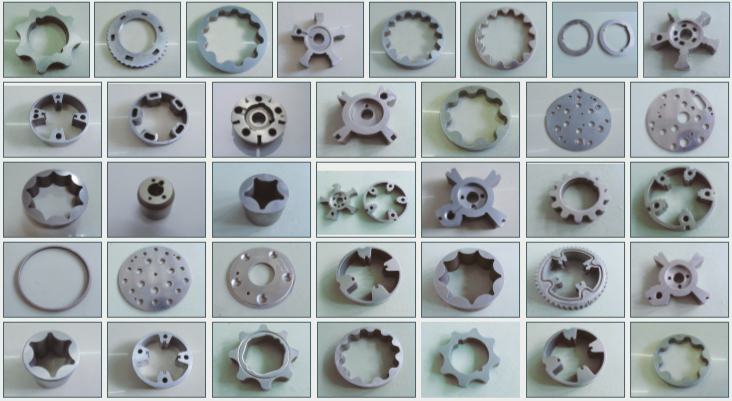
11. Abrasive flow deburring: Conventional vibration grinding is difficult to deal with hole-type burrs. The typical abrasive flow processing technology (two-way flow) uses two vertically opposed abrasive cylinders to push the abrasive to form on the workpiece and fixture. The channel flows back and forth. Abrasives entering and passing through any restricted area will produce an abrasive effect. The extrusion pressure is controlled at 7-200bar (100-3000 psi), which is suitable for different strokes and different cycles. Applicable objects: It can handle 0.35mm microporous burrs without secondary burrs. The fluid characteristics can handle burrs at complex locations.
12. Magnetic deburring: Magnetic abrasive processing is under the action of a strong magnetic field, the magnetic abrasives filled in the magnetic field are arranged along the direction of the magnetic field lines, adsorbed on the magnetic poles to form "abrasive brushes", and produce a certain pressure on the surface of the workpiece , While the magnetic pole drives the "abrasive brush" to rotate, it keeps a certain gap and moves along the surface of the workpiece, so as to realize the finishing of the surface of the workpiece. Features: low cost, wide processing range, convenient operation Process elements: grinding stone, magnetic field strength, workpiece speed, etc.
13. Robot polishing unit: The principle is similar to manual deburring, but the power is turned into a robot. With the support of programming technology and force control technology, flexible grinding (pressure and speed conversion) is realized, and the advantages of robot deburring are prominent. Compared with manual robots, they have the following characteristics: improved efficiency, improved quality, and high cost.
Special problems: Burrs in milled parts: In milled parts, deburring is more complicated and more costly, because multiple burrs are formed when milling different sizes and different positions. At this time, it is particularly important to select the correct process parameters to reduce the size of the burr.

